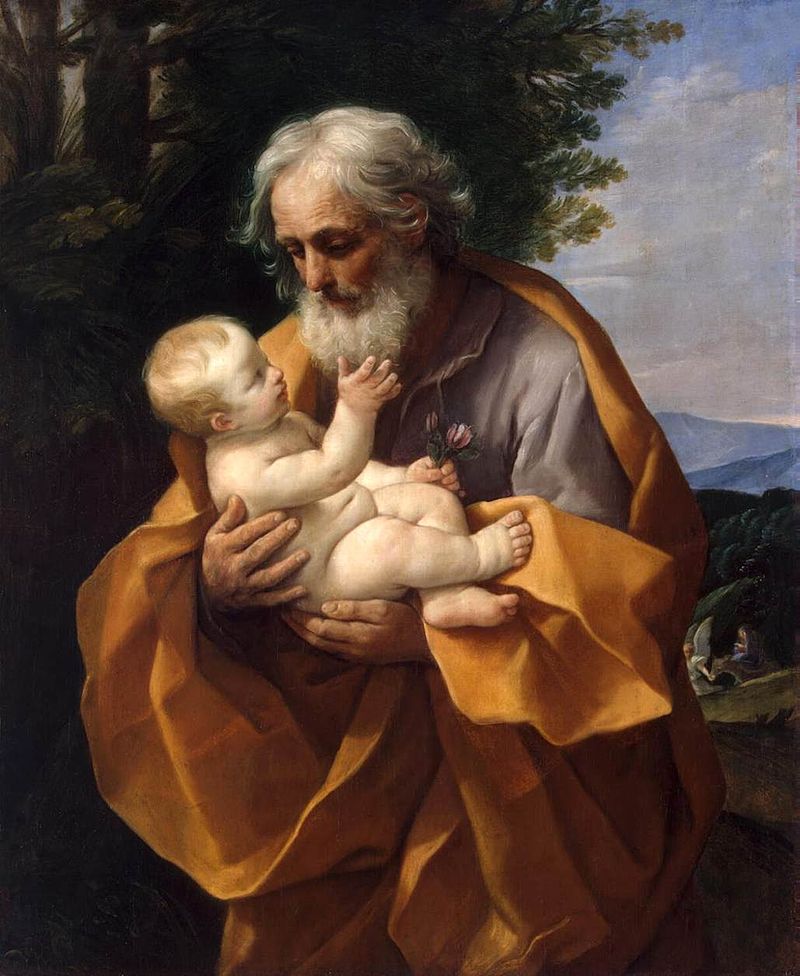
* * * *
Friday, March 25, is the Feast of the Annunciation. (The full title is “The Annunciation to the Blessed Virgin Mary.”) In past posts I’ve said this feast was an example of “back dating;” in other words a kind of metaphor for how the early Church “figured it backwards.”
It all started with the birth of Jesus. First, the early Church Fathers decided that the celebration of His birth would be on December 25. (For reasons explained in the notes.) Then they figured backwards nine months. Since they said Jesus was born on December 25, He had to have been “conceived” on the previous March 25. And that’s where the Annunciation comes in. It celebrates “the announcement by the angel Gabriel to the Virgin Mary that she would conceive and become the mother of Jesus, the Son of God, marking his Incarnation.”
By the way, I gleaned the bulk of this post from 2015’s The Annunciation “gets the ball rolling,” and 2016’s An Annunciation-Good Friday anomaly. Then too, in 2019 – before the COVID hit – I posted “On to Jerusalem!” That talked about my three-week pilgrimage to Israel, based in Jerusalem, with side trips to Nazareth, the Dead Sea, Jacob’s Well and other highlights.
Now back to “Ball rolling” and the Annunciation. As it turns out, Christmas is centered around the winter solstice, and the Annunciation is centered around the vernal (spring) equinox:
An equinox occurs twice a year, around 20 March and 22 September. The word itself has several related definitions. The oldest meaning is the day when daytime and night are of approximately equal duration. The word equinox comes from this definition, derived from the Latin aequus (equal) and nox (night)
So the Annunciation is celebrated about the time of the vernal equinox. (Vernal is from the Latin word for “spring,” and BTW: The summer solstice is the longest day of the year.)
All of which brings up the matter of the Incarnation. As Wikipedia put it, the Incarnation is the belief that Jesus became flesh by being conceived in the womb of Mary. (Which either preceded or coincided with the Annunciation itself; “it’s a mystery.”) The idea is that the “Son of God took on a human body and nature and became both man and God.”
On that note see John 1:14: “And the Word became flesh, and dwelt among us.” And while Christ’s Incarnation is mainly commemorated and celebrated each year at Christmas, it also refers back to the Annunciation itself. In other words, Christmas and the Annunciation celebrate “different aspects of the mystery of the Incarnation.” (See also Liturgical year – Wikipedia. )
All of which is part of this-worldly’s “Christian pilgrimage.” (Exemplified by my May 2019 trip to Jerusalem.) Which brings up the liturgical year – the church’s calendar year – which begins in Advent (December 1 or so), and goes through next November. (When it starts all over again.)
But it could be argued that the liturgical year properly starts with the Annunciation. That’s the first moment when it became obvious that God would intervene on our behalf, by and through the birth, life and death of Jesus. More to the point, the church year “sets out to attune the life of the Christian to the life of Jesus.” (It’s not an “arbitrary arrangement of ancient holy days”):
It is an excursion into life from the Christian perspective [and] proposes to help us to year after year immerse ourselves into the sense and substance of the Christian life… It is an adventure in human growth; it is an exercise in spiritual ripening.
Note the focus on “exercise” and “adventure.” That’s a reminder that as a good and proper Christian, “It is to vigor, not comfort that you are called.”
* * * *
Which brings up how Mary probably reacted to the “good news” here. Consider what Garry Wills said about it: “For me, the most convincing pictures or sculptures of the Annunciation to Mary show her in a state of panic … shrinking off from the angel, looking cornered by him.” He noted especially some 14th century paintings, “where Mary is made so faint by the angel’s words that she sways back and must grab a pillar to keep herself upright.”
See also Luke 1:29. Most translations indicate that Mary was “deeply troubled” by the angel’s announcement. Other translations have her “confused and disturbed,” or agitated, perplexed or alarmed. Which led Wills to ask – about Mary’s hearing that she had “found favor” with God – “Did she know already how dangerous is such a favor? God’s chosen people are commonly chosen to suffer.” (Which is certainly a sobering thought for good and proper Christians.)
And as indicated when Mary presented the newborn Jesus to the Temple.* That’s when she heard Simeon say, “you, Mary, will suffer as though you had been stabbed by a dagger.” (Luke 2:35.*) Or that “a sword will run through this woman’s heart.” Thus in some views, Mary’s “look almost of horror at what she has just been told.” Which brings up Dante Gabriel Rossetti‘s interpretation of the event, shown below. You might meditate on that during this Lent 2022, if you feel alarmed, agitated or perplexed at the world events going on around us.
Just know that you are in good company…
* * * *

* * * *
The upper image is courtesy of Annunciation – Wikipedia. The caption: “The Annunciation – Johann Christian Schröder.”
“Book of Common Prayer.” The passage is at page 339, Holy Eucharist Rite I post-communion prayer.
Re: Feast days. The link is to Wikipedia’s Calendar of saints. “The calendar of saints is the traditional Christian method of organizing a liturgical year by associating each day with one or more saints and referring to the day as the feast day or feast of said saint. The word ‘feast’ in this context does not mean ‘a large meal, typically a celebratory one,’ but instead ‘an annual religious celebration, a day dedicated to a particular saint.'”
Re: “In past posts,” that is, in past posts on the early church figuring it backwards. I originally cited On the readings for December 21, and also The original St. Nicholas.
Re: How and why the early Church Fathers picked December 25 as the date of Jesus’ birth. See the full story at 2015’s The Annunciation “gets the ball rolling,” but basically, people back in the olden days didn’t know the winter solstice came – and went – every year. So around every December 22 they’d worry that the days would keep getting shorter and shorter, “until there was nothing but eternal night.” But then the days started getting a bit longer, and the Church basically adopted the Roman festival of Saturnalia, a “time of raucous celebration.” (Again, see the full story at “ball rolling.”)
Re: Vernal equinox. For us that would be the one in the northern hemisphere.
Re: “To vigor, not comfort.” An allusion to this full quote on the life of a new Christian:
Hearing now and again the mysterious piping of the Shepherd, you realize your own perpetual forward movement. . . Do not suppose from this that your new career is to be perpetually supported by agreeable spiritual contacts, or occupy itself in the mild contemplation of the great world through which you move. True, it is said of the Shepherd that he carries the lambs in his bosom; but the sheep are expected to walk, and to put up with the bunts and blunders of the flock. It is to vigour rather than comfort that you are called.
From Evelyn Underhill’s Practical Mysticism, Ariel Press, 1914, at page 177.
Re: “What Garry Wills said.” See What Jesus Meant: Wills, the 2007 book, an “illuminating analysis for believers and nonbelievers alike … a brilliant addition to our national conversation on religion.” (Said Goodreads.) The quote is from page 1 of my Penguin Books edition, “The Hidden Years.”
Re: “When Mary presented the newborn Jesus…” See the most recent post, On the Presentation of Jesus – 2/2/22. We celebrate the Feast of the Presentation of Jesus at the Temple on February 2. The custom of presenting Jesus – “as a baby, 40 days after Christmas – followed a 1,000-year-old custom that began with Moses. In Exodus 13:2, God said, ‘Consecrate to me every firstborn male:’”
Counting forward from December 25 as Day One [for Jesus], we find that Day Forty is February 2. A Jewish woman is in semi-seclusion for 40 days after giving birth to a son, and accordingly it is on February 2 that we celebrate the coming of Mary and Joseph with the infant Jesus to the Temple at Jerusalem.
Re: Luke 2:35. The “sword will run through this woman’s heart” quote came from the translation Wills used. Most other “Bible Hub” translations say the sword will pierce Mary’s “own soul;” that includes the King James Bible. (The one God uses.) As to feeling alarmed, agitated or perplexed at world events, see 1st Corinthians 10:13, “The temptations in your life are no different from what others experience. And God is faithful. He will not allow the temptation to be more than you can stand. When you are tempted, he will show you a way out so that you can endure.” (Well, almost “no different from what others experience.” Mary was after all in a class by herself.)
The lower image is courtesy of Rossetti Annunciation – Image Results. See also The Annunciation by Dante Gabriel Rossetti – my daily art display:
Take a while and look at Mary’s expression. How do you read Rossetti’s depiction of this young woman? Look at her facial expression. This is not one of acquiescence or pleasure. This is a look almost of horror at what she has just been told. This terrified look adds a great deal of power to Rossetti’s painting. Mary herself in Rossetti’s painting looks much younger than we are used to seeing in similar scenes. She exudes a youthful beauty but only seems to be a mere adolescent with her long un-brushed auburn hair contrasting sharply with her white dress. She is painfully thin and her hesitance and sad look tinged with fear endears her to us.
* * * *



